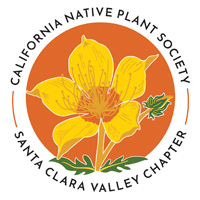Whether native or introduced, almost all species of plants whose flowers contain nectar host microorganisms like bacteria and yeasts in the nectar. Initially free of microbes, flower nectar gets its microbial inhabitants from bees, butterflies, hummingbirds and other flower-visiting animals as they come to sip nectar from flowers.
Dr. Fukami’s research team at Stanford University has been studying the nectar-inhabiting microorganisms over the past 15 years, focusing on the sticky monkeyflower, Diplacus aurantiacus, the common hummingbird-pollinated shrub native to the Bay Area and elsewhere in California.
In this talk, Dr. Fukami will share a story of “flowers as islands,” where the microbial community that is formed in flower nectar, with the help of hummingbirds, can subsequently change nectar chemistry to alter how attractive the flowers are to hummingbirds and therefore how successful the flowers will be in producing seeds. This research has mostly been conducted at Jasper Ridge Biological Preserve – ‘Ootchamin ‘Ooyakma in Woodside, but also on the Dish hill of Stanford University, other sites in and around the San Francisco Peninsula and outward to Bodega Bay to Big Sur.
Dr. Tadashi Fukami is Professor of Biology and Earth System Science and Faculty Director of Jasper Ridge Biological Preserve, ‘Ootchamin ‘Ooyakma, at Stanford University. He earned his Bachelor’s and Master’s degrees from Tokyo, Japan, and a PhD from the University of Tennessee, Knoxville. He was a postdoctoral fellow at Manaaki Whenua – Landcare Research in New Zealand and then Assistant Professor at the University of Hawaii at Manoa before joining the Stanford faculty in 2008.

